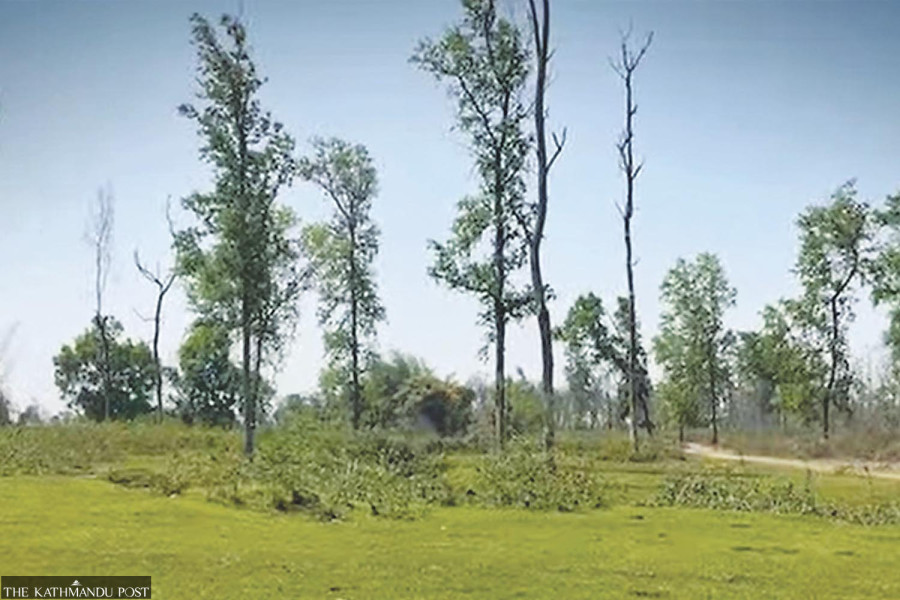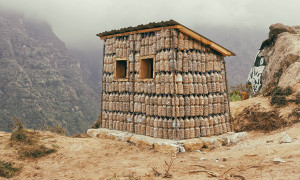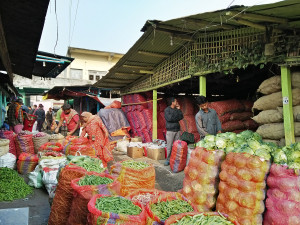Money
India invites bids to construct Dodhara Chandani dry port in Nepal’s far west
The facility will serve as a tri-junction for trade between Nepal, India, and China. It is 245 km from New Delhi and 334 km from Tinkar Bhanjyang at Nepal-Tibet border in the north.
Bhawani Bhatta
An Indian government undertaking has formally invited bids to construct the much-touted Dodhara Chandani dry port in Nepal’s far west. The project has been in the works for a decade and a half.
Twin Integrated Check Posts (ICPs) will be located along the Nepal-India border. The dry port on the Indian side will be built in Banbasa and that on the Nepal side will also be built under an Indian grant.
On January 4, RITES Ltd, formerly the Rail India Technical and Economic Service Limited, an Indian public sector undertaking and engineering consultancy corporation, issued a tender for the IRs2.54 billion (Rs4 billion) project. The tender closes on January 28.
The project completion period is 30 months.
Dodhara Chandani dry port will serve as the first business gateway to India from Nepal’s far west. The site is 245 km from India’s capital, New Delhi, and 1,200 km from its Gujarat state.
Officials said the dry port will facilitate trade with other Indian states, such as Rajasthan, Uttarakhand, Punjab, and Haryana. It will also provide Nepal access to India’s largest seaport, the Jawaharlal Nehru Port in Mumbai, enhance Nepal’s foreign trade, and reduce trade costs.
Nepali officials say transporting goods to Nepal through these routes will result in substantial savings. Most of Nepal’s trade infrastructure is concentrated in the east, connecting to the Kolkata port.
A dry port in Sudurpaschim Province may eventually open access to additional Indian ports.
The project is also expected to reduce transport costs and shorten the time required to import goods from India.
“We plan to start the works on the ground in April,” said Ashish Gajurel, executive director of the Nepal Intermodal Transport Development Board. “We are working on clearing the land to hand it to the Indian construction company.”
Gajurel said the tender process moved forward following a series of discussions held at the Indian Embassy in Kathmandu. In these discussions, the Nepali side committed to clearing trees by April.
“We have given a guarantee to clear the land,” he said. “With the assurance, the Indian side invited bids for the construction works.”
The scope of the works includes constructing the administrative building, warehouse, quarantine facilities, and residential buildings. India will also construct a link road from the Indian national highway to the dry port.
Nepal has listed the dry port as a national priority project.
In 2023, the government approved the project’s Environmental Impact Assessment (EIA) report.
On September 18, the provincial cabinet permitted the Nepal Intermodal Transport Development Board to use 43 hectares of Mayapuri community forest in the buffer zone of Shuklaphanta National Park, clearing the last major hurdle for the project.
However, tree-cutting at the construction site has yet to begin.
Approximately 1,700 trees need to be cut down to build the dry port. The board has already signed an agreement with the Department of National Park and Wildlife Conservation and deposited Rs150 million in the department’s account as compensation for the tree felling.
Shuklaphanta National Park is working to confirm the exact number of trees, as determined by the Environmental Impact Assessment.
“After the report is submitted within a week, tree felling will begin,” said Gajurel. “The estimated cost of cutting trees will also be included in the study report of the national park.”
He added that the tender to cut trees would be invited next week if everything goes smoothly. The tender notice will be published for 15 days if the cost is within Rs2 million and for 35 days if it exceeds Rs2 million.
Discussions on the dry port began around two decades ago. After years of effort and study, the process has finally gained momentum.
The dry port is expected to connect Dodhara Chandani, next to the Mahakali river, to the mainstream of development and serve as a key driver for the development of the far-west region.
Political leaders envision developing the dry port as a tri-junction for trade between Nepal, India, and China. The 334 km Mahakali corridor links Kanchanpur in the south with Tinkar Bhanjyang at the Nepal-Tibet border in the north.
A four-lane concrete bridge has already been completed, and an 8 km road connecting the dry port is in the final phase.
According to the master plan, the depot will eventually accommodate 3,000 20-foot freight trucks, though the first phase will provide space for 300 trucks. The import warehouse will have a 7,000 square metre space, and the export warehouse will cover 2,520 square meters.
Likewise, the railway warehouse will occupy 17,500 square meters, and the container stacking yard, a large open space for container movement, will be built over 10,000 square metres.
A decade and a half ago, the World Bank conducted a feasibility study for the proposed dry port at Kanjabhoj in Dodhara Chandani Municipality, and the Nepal Intermodal Transport Development Board prepared another report in 2016.
Four years ago, the government decided to construct the facility in Ward 1 of Chandani Municipality. But protests by residents in Kanjabhoj, the initially planned site in Ward 8, led to the project’s relocation.
The Indian government agreed to build the facility during then-prime minister Pushpa Kamal Dahal’s 2023 India visit.




 18.12°C Kathmandu
18.12°C Kathmandu














